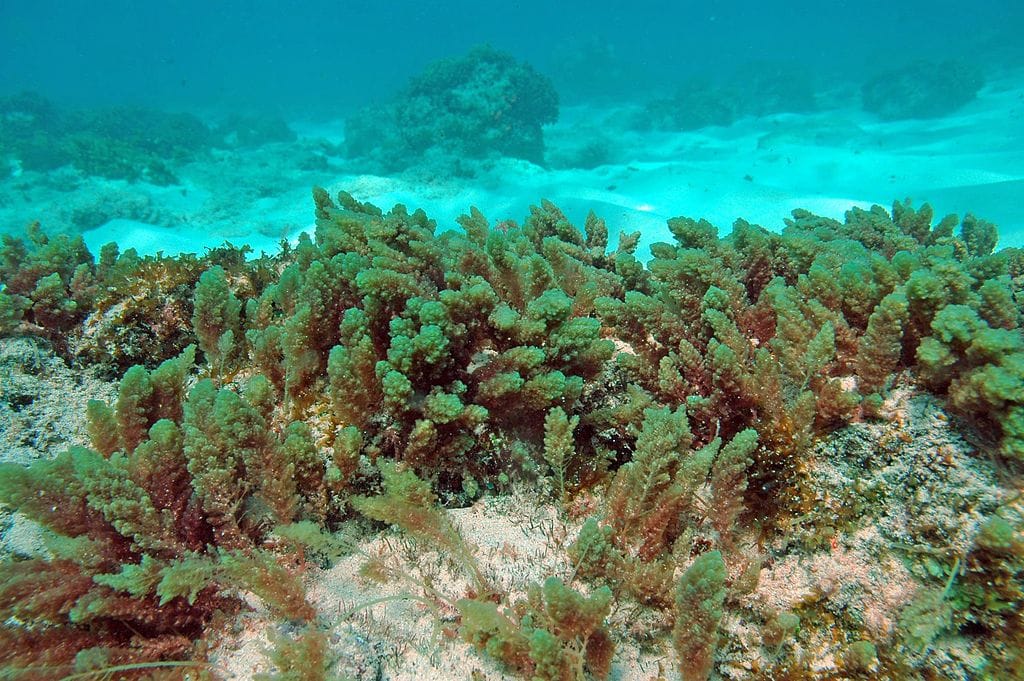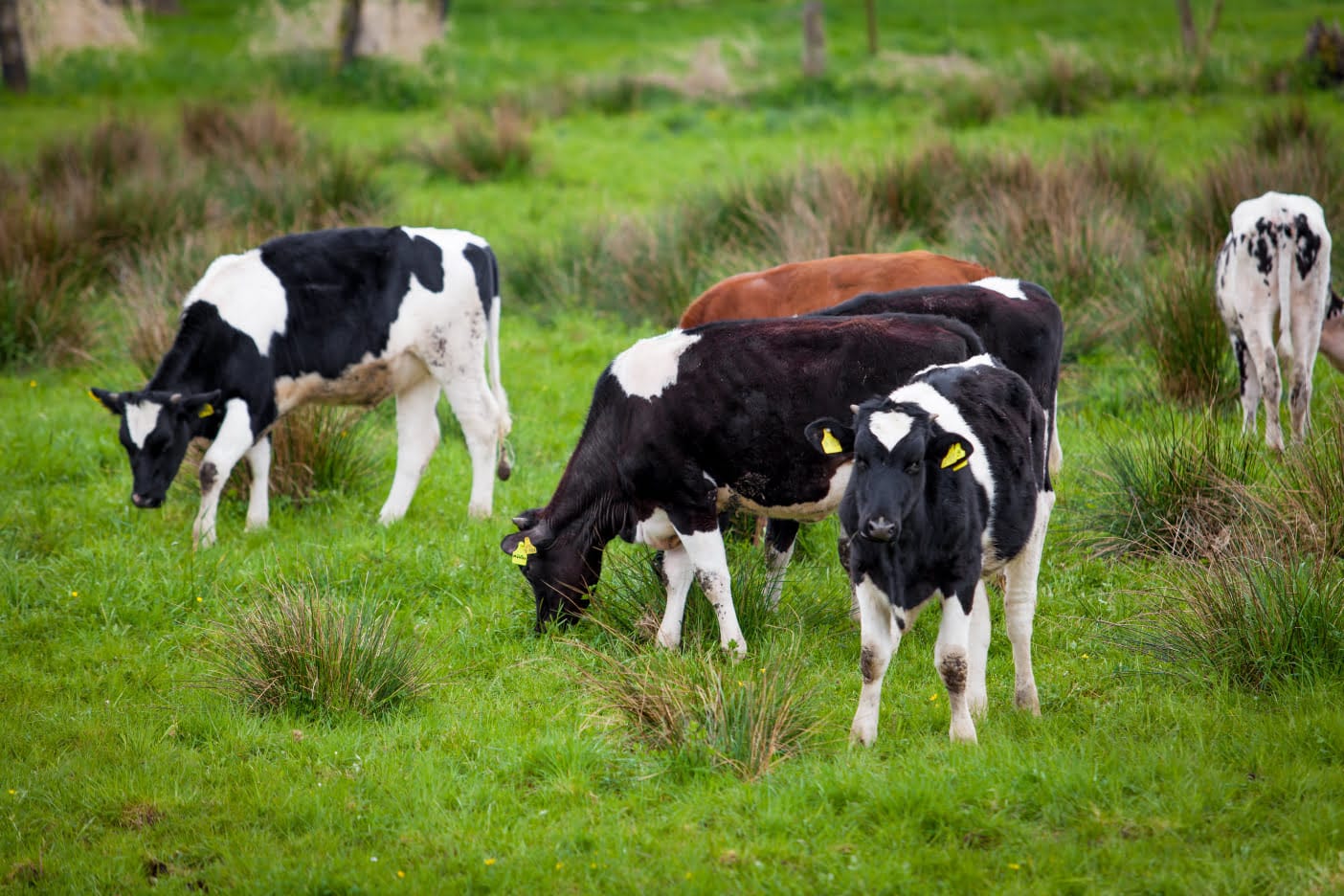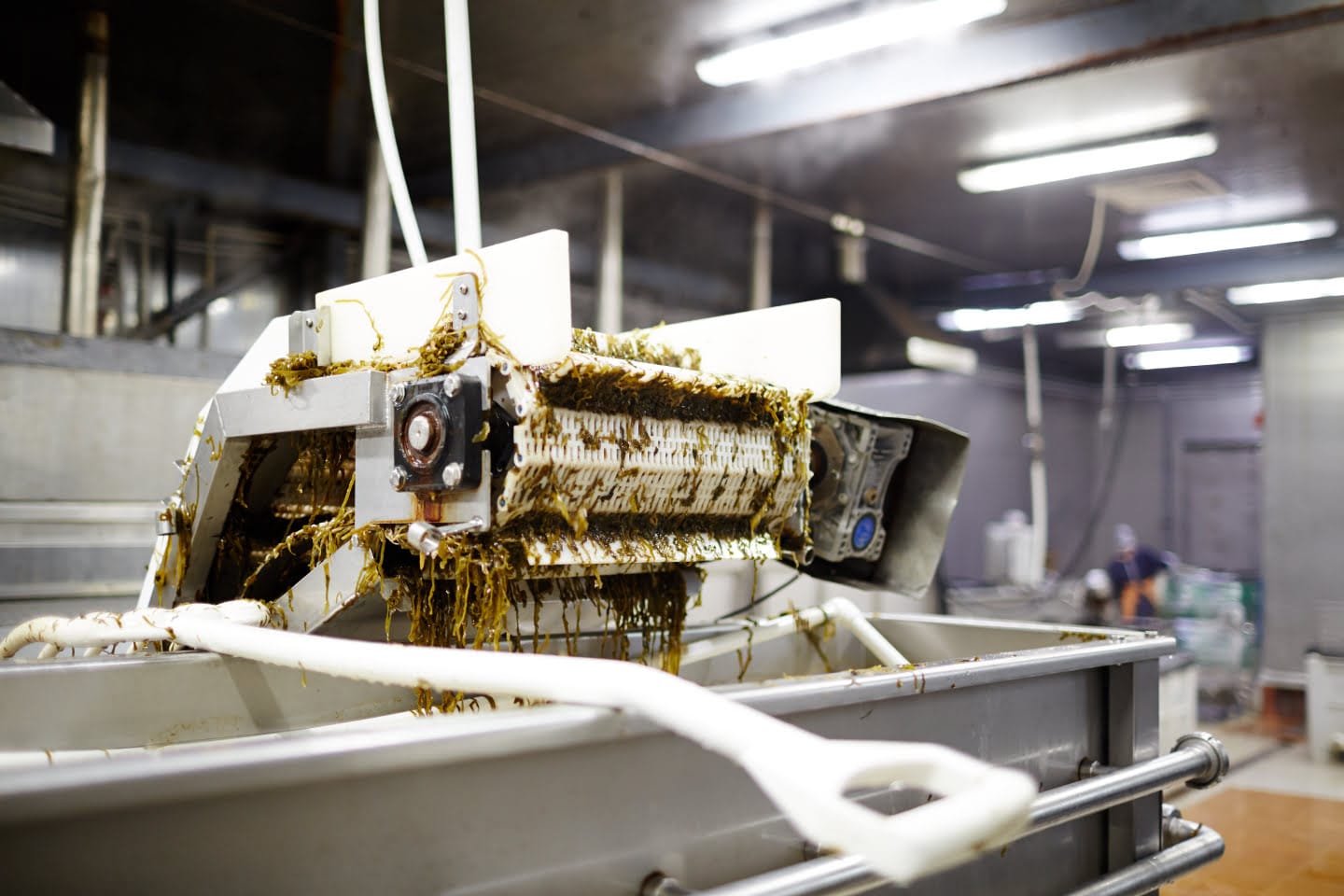Cows have always been synonymous with grass. But move over green guys, there’s a new favorite in town and guess what, it’s great for the environment too!
Researchers have found that a new type of seaweed could make cows less gassy – which is good news for climate change.
Scientifically known as ‘Asparagopsis taxiformis or A. taxiformis, this seaweed could reduce the amount of methane a cow produces by 90%, just by replacing 0.4% of a cow’s feed with it! Isn’t that an amazing find?

Now let’s talk a little about cows and methane. After carbon dioxide, the next most abundant greenhouse gas is methane.
Now while CO2 is much more in the atmosphere than methane, methane traps 30 times more heat than CO2.
The beef and dairy industry is one of the main contributors to greenhouse gases that come from cows who release methane from both ends. Cows have little microbes in their stomachs that help with digestion. These microbes produce methane as their waste which in turn the cows release into the atmosphere while passing gas, or through their burps.
There are 1.4 billion cattle in the world, a number that continues to steadily rise with the growing demands for beef and dairy.
Cows, after joining forces with other animals that graze, are responsible for burping the methane equivalent of 3.1 gigatonnes of carbon dioxide into the atmosphere every year.
Imagine the carbon dioxide that 650 million cars would emit in a year. Now that’s the methane equivalent of how much cows release into the atmosphere! Overall, livestock accounts for about 15% of global greenhouse gas emissions.

But nobody’s hating on the poor cows. After all, we’re the ones reliant on them for our daily serve of dairy and meaty goodness.
This is why independent entities across the world are now trying to find the best solution to this pesky methane problem.
Enter seaweed. Tada!
Seaweed is now being poised as one of the most powerful weapons that could be used to fight climate change.
Apart from reducing the amount of methane that cows release into the atmosphere, seaweed could also help sequester carbon dioxide and reduce ocean acidification since all the carbon in the water doubles up as a nice tasty snack for it!
How does it work?
When a cow chomps on grass or other plants, all the microbes that are permanent guests in its rumen (the first stomach) use carbon and hydrogen from the fermentation of the plants the cows eat to produce methane, which then gets released from both ends of the cow. Most of it is via cow burps while about 5% percent of it is through flatulence.
Asparagopsis and other seaweed types have some special gland cells that make and store an organic compound called bromoform. When this seaweed is freeze-dried, powdered and added to a cow’s meal, this bromoform works hard to block the carbon and hydrogen atoms from forming methane in the stomach.
In response to this whole bromoform action, the cow’s body ends up making more of something called propionate, which is a fatty acid that helps produce glucose in the metabolic process, and this, in turn, allows the animal to grow more and also produce more milk.
This whole generating of methane is just symbolic of energy that the cow doesn’t use. If this methane generation can somehow be stopped, and instead, if the cow gets to absorb that energy, the cow grows faster and gets healthier.
Another point to consider is that if somehow the digestion efficiency of a cow is increased by even 5%, that means that 5% of the land used for the production of cows could be removed and it could instead be used to grow other kinds of food or for other purposes!
It’s a win-win for both farmers and the environment! But now we’re going to drop a huge plot twist.
While seaweed is making the news in cow-land, turns out, our sneaky little lovable cows have been chomping on seaweed for a few decades at least now!
Some studies have shown that herders in ancient Greece fed their cows seaweed, and so did some clever farmers in the 18th century Iceland! The ancient herders deliberately grazed their cows on beaches so that their animals would chance upon the seaweed by themselves and slurp it all up.
After all, they’re quite picky and mother nature intended it that way so that foraging animals are inertly able to sort out the poison from pasture while grazing.
But with the vast amount of resources, studies and technology available today, organisations all over the world are trying to take what our ancestors already knew to the next level, to create a powerful norm that would pave the way for sustainability in agriculture.

Fonterra, a co-operative comprising 10,000 farmers, has partnered with Sea Forest, an Australian-based business, to conduct trials to see if this seaweed could be used as a supplement in cow feeds. The trial starts at one farm in Tasmania, and guess just whose farm that is?
One of pasture.io’s own customers, Richard Gardner!
Gardner is conducting a huge trial of asparagopsis seaweed, that’s being overseen by Fonterra and Sea Forest.
Gardner uses pasture.io’s services for his dairy farm at Tunbridge, which’s located 100 kilometres north of Hobart.
Gardner’s farm has a climate that’s conducive to the growth of seaweed and also a sturdy feeding and milking system. What makes this whole exercise even more effective is that after a stretch of carbon auditing, Gardner’s farm was identified as a source of a significant amount of methane emissions – which in this case is a good thing since it would be the perfect example of how seaweed could come a long way in reducing methane emissions by livestock.
All three parties are also going to be closely studying an all-around perspective of the effects of this seaweed which includes its effects on milk production, cows’ health and well-being, etc.
An environmental scientist called Rob Kinley moved to Australia to work with CSIRO (Commonwealth Scientific and Industrial Research Organisation) and started testing different types of seaweeds for their impact on methane emissions from livestock. Hands-down, Asparagopsis won by a sweeping margin.
However, it does not grow freely throughout the planet and will have to be farmed. Now this also is good news since, as we mentioned before, seaweed cultivation sweetly slurps up the nitrogen and carbon in the water thus improving ocean life.
Pretty soon, we could have a new finding on our hands that could potentially dramatically shift climate change as we know it. From reducing methane emissions to helping cows grow better and supply a bountiful of milk to even help clean up the oceans, there’s a lot of good that seaweed can do for the world as we know it. And it sure is exciting to know what’s in store!
Keep visiting us for more such interesting news in the world of pastures and cows! Until next time, happy farming!
- The Dedicated Team of Pasture.io, 2021-01-04